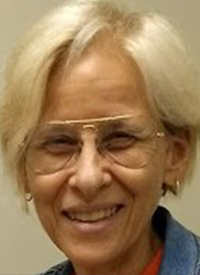Opinion: Agency Nurses May Not Be The Answer To Surgical Oncology Staffing Issues
Debi Fischer, MSW, BSN, BA, LCSW, RN, discusses the potential limitations of hiring agency nurses on understaffed surgical oncology units.
Debi Fischer, MSW, BSN, BA, LCSW, RN

“It’s so depressing on this floor. All my patients are dying, I need help changing a colostomy bag. It just exploded.”These are common remarks that staff surgical oncology nurses are used to hearing from agency nurses. Years ago, hospitals were reluctant or cautious in hiring agency nurses. The era of COVID-19 changed this playing field. Now it is the norm. According to the Oncology Nursing Society, “All healthcare settings where cancer care is delivered face challenges as staff shortages add further stress to overburdened healthcare systems”1.
Hiring agency nurses with limited oncology experience can have some drawbacks. As a staff RN used to caring for this patient population, I know that patients on surgical oncology units are often receiving bad news either post-op or from imaging studies that show that their cancer has metastasized. In my opinion, agency RNs are often not used to this sometimes sad, or even depressing atmosphere.
Often, agency nurses find themselves caring for younger patients, including those between the ages of 20 to 40 years. It takes a certain type of resilience to work in this environment. Without the proper background and experience, some agency nurses struggle to cope with the patient’s limited options and terminal illness. Depending on your previous professional and personal background, this environment can be challenging. None of us knows what the future holds. Many of us have had a personal or family history of dealing with cancer and all that affects us when dealing with these cases.
Many times, you hear the agency nurse saying,” I don’t know what the patient knows about their diagnosis.”Discussions between the nurse and patient may vary and be difficult to monitor from an outside perspective. In terms of what the nurse discusses with their patient for those 12 hours, it is a guessing game.
There is a concept called a “crescendo effect”2 that is relevant in surgical oncology units. An example of the crescendo effect is when a nurse experiences “moral distress” 3. This can occur in situations regarding staffing issues, wherein there are inadequate number of RNs to deal with the acuity of the unit. In this situation, the RN is playing catch-up the entire shift. The concept of moral distress can be defined as realizing the “morally correct action”4, 5 to pursue.The dilemma is that one cannot complete this action due to “internal and external constraints”6. “Internal constraints” can be thought of as scenarios where the healthcare worker has no power over the situation, for example, a patient’s imminent death.“External constraints” deal with communication issues.
Another crescendo effect scenario is pain control that is not well managed. In this situation, the patient is miserable. The nurse therefore experiences the byproduct of this event. Marturano et al state that “As the event passes, a lingering effect or residue remains with the nurse, forming a new higher baseline of distress”4 Sirilla et al expands on this idea, noting that uncontrollable pain for the patient can affect the nurse and cause “severe symptoms of moral distress, emotional exhaustion, and a detachment from patient care.”5 Whenever possible, these crescendo effects should be minimized to improve outcomes for both the nurses and patients.
The environment of care is also a concern. A key example is emptying drains and changing ostomies. You may have changed a colostomy bag in nursing school, but have you ever had two different colostomy bags explode at 3 am? Granted, that is not the typical night, but it comes with the territory.
Above all, patient safety is a driving consideration. It is important to recognize that lack of current oncology competencies can “increase [the] error risk for patients and nurses” 6. When the nurse lacks these competencies, everyone is at risk, the patient as well as the nurse. This filters down to poor patient outcomes and increased hospital liability. Moreover, the RN’s stress level increases.
Being present to help another nurse in this type of unit is key. Changing an ostomy bag can be challenging to a nurse in this stressful environment. What if you needed help? First and foremost is the patient that you would not want to leave in this predicament. You always go back to the age-old question, what if this was you or your family member? Patient consideration in this case is of utmost importance.
These scenarios do not have easy answers and must be assessed and evaluated on a routine basis. Agency nurses may play a role in helping alleviate the burden in surgical oncology units, but they are not a fix-all solution.
Although I recognize that staffing issues continue to represent a major obstacle to care, it is equally important that hired nurses of surgical oncology units have familiarity with caring for patients with terminal illness—or they must be given the resources and the guidance necessary to learn.
References
- ONS Recommendations for oncology staff assignments during the COVID-19 pandemic. Oncology Nursing Society. February 2022. Accessed August 18, 2022. https://bit.ly/3ChLYUe
- Pelton N, Bohnenkamp S, Reed PG, Rishel CJ. An inpatient surgical oncology unit's experience with moral distress: Part II. Oncol Nurs Forum. 2015;42(4):412-414. doi:10.1188/15.ONF.412-414
- Pelton N, Bohnenkamp S, Reed PG, Rishel CJ. An inpatient surgical oncology unit's experience with moral distress: part II. Oncol Nurs Forum. 2015;42(4):412-414. doi:10.1188/15.ONF.412-414
- Marturano ET, Hermann RM, Giordano NA, Trotta RL. Moral distress: identification among inpatient oncology nurses in an academic health system. Clin J Oncol Nurs. 2020;24(5):500-508. doi:10.1188/20.CJON.500-508
- Sirilla J. Moral distress in nurses providing direct care on inpatient oncology units. Clin J Oncol Nurs. 2014;18(5):536-541. doi:10.1188/14.CJON.536-541
- McCracken C, McAndrew N, Schroeter K, Klink K. Moral Distress: A qualitative Study of experiences among oncology team members. Clin J Oncol Nurs. 2021;25(4):E35-E43. doi:10.1188/21.CJON.E35-E43


